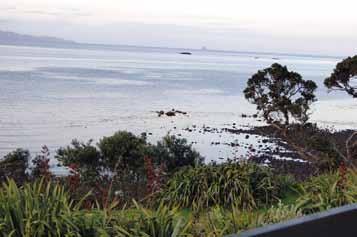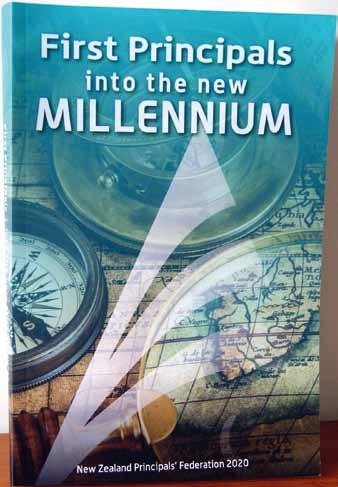
18 minute read
PreSIDeNT’S PeN
Perry rush
NatioNal PresideNt, NeW ZealaNd PriNciPals’ FederatioN
I Am ALwAyS reluctant to point to the halcyon days of yesteryear as the high tide mark for quality but in the instance of initial teacher education, it is appropriate.
Our current teacher training providers are not servicing our profession well. The quality of provision must be urgently addressed.
I remember those halcyon days. There was a strong emphasis on the ‘practice’ of teaching so that trainee teachers experienced ‘how to teach’. This meant learning from an expert who modelled teaching and taught trainee teachers the skills, techniques, and knowledge relevant to each curriculum.
These newly minted capabilities were then able to be practised in school-based settings.
This meant that trainee teachers experienced visual art through media such as pottery, print making or painting.
They experienced science by experimenting with chemicals, manipulating apparatus, and wading in streams to collect, explore and classify flora and fauna.
They played a plethora of sport such as cricket, softball and hockey and were taught how to throw, catch, kick and hit a ball.
They experienced the fire of competition and the sharp prick of embarrassment at sometimes being chosen last by peers who were team captains, vowing never to deploy this practice with their own pupils.
They added legions of fitness drills, drama games, maths puzzles, titles of outstanding children’s fiction and current events quizzes to their teaching tool kit.
The danced, learned to play a guitar and sang as members of a choir.
They learned how to administer a ‘running record’ and became adept at doing so with multiple opportunities to practise over the 2 or 3 years of training.
The richness of initial teacher education ended when Teachers’ Training Colleges were amalgamated with Universities in the early 2000s.
There is no more powerful metaphor for the destructive impact of this amalgamation than the huge drama studio at Wellington Teachers’ College that was, in short order after amalgamation, converted to a lecture theatre.
Half day drama workshops every week in the drama studio were quickly commuted to several hour-long drama lectures over a year, deemed by University bosses to be adequate preparation for primary drama teaching.
Is it any surprise that the practical curriculum has suffered over the past 15 years? And therein lies the problem. Universities are ivory towers that emphasise academic learning. They focus on teaching theory. But teacher training is an apprenticeship. While there are opportunities to ‘practise’ teaching in school practicums, this is different to learning ‘how to teach’. The alchemy missing is the knowledge of practices associated with different curriculum and a deep understanding of pedagogy.
This is a major problem, and we are seeing the impact on student achievement.
Is it surprising that we have declining literacy rates in New Zealand, or young people struggling with obesity without sufficient skill-based physical education programmes? Or so little integrated drama and dance other than the ubiquitous school production?
NZ’s leading supplier of laser cutting solutions for schools

We don’t just sell boxes! Your machine will be delivered, installed, your staff will be trained & ready to go. Contact us today for more information and to be connected with your nearest reference school. 0800 810 365 info@makerspacenz.com makerspacenz.com
LASER CUTTERS | PLASMA CUTTERS | CNC ROUTERS 3D PRINTERS | EXTRACTION
The dysfunction of initial teacher education is symptomatic of other major problems in education.
New Zealand education is rudderless. Schooling and young people’s achievement is suffering for lack of leadership, that values practice-based experience, that articulates an ethos of education, that is truly bespoke, of New Zealand and focussed on our way of doing things.
Leadership of the system and all its parts does not lie with the Ministry of Education – they are stewards of the system. It does not lie in the Education Review Office who have an evaluative function, nor does it lie with schooling. Each school is a self-managing, self-governing entity charged with localising curriculum.
Some might say it lies with the political leadership of the day but that is not something principals would wish on schooling. Over the past 15 years New Zealand education has experienced a raft of damaging education policies and we no longer wish to be subject to the pendulum swing of policy, left to right, right to left!
Education in New Zealand is suffering for lack of cohesive leadership that joins all parts of the ecosystem to a whole, that isn’t a mess of competing ideologies and that makes sense.
Where is the leadership to review and design an effective system of initial teacher education that values the practice of teaching?
Where is the leadership that holds the tinkering at the Education Review Office (ERO) to account and, despite their current advocacy of a new partnership model, insists that change isn’t just window-dressing?
Where is the leadership of the New Zealand Curriculum? Why is there such a vacuum in championing the Curriculum and the urgent provision of curriculum advisors to ensure teaching and learning is significantly strengthened right across New Zealand?
Where is the leadership that echoes the strong and visionary educational leadership of the past? The kind that we saw clearly in Clarence Beeby’s call ‘to a free education of a kind for which he [every student] is best suited and to the fullest extent of his powers’. Why is it that we must return to a period some 70 to 80 years ago to find a New Zealand educationist with vision as influential as his?
Education in Aotearoa is suffering from an absence of vision and brave, cohesive leadership. It is suffering from a lack of organisational power and appropriate influence. We have sunk our trust in localisation, forgetting that such an approach will only flourish within a vision that is designed around strong ideas that serve to organise the system.
In this we are our own worst enemies. We do not want to support a strengthening of system level educational decisionmaking for fear that it will be politically imbued or impose the wrong sort of vision on schooling.
But we can and should tackle this dilemma. The various parts of the system are not working in unison and that simply will not service the future.
Post-election and as the new term of government gets underway, major substantive change is required.
I call on the Minister of Education to urgently work across the education ecosystem to address the inconsistencies and build a connectedness that is sorely lacking – starting with significant change in initial teacher education.
Our experience tells us that traditionally schools review their accounting systems on two occasions – while they are setting their budget – and during the course of their audit.
During the budget setting process it is always a good idea to ask yourself some questions: “Do I receive good budget tools/spreadsheets with comparative data from my provider? Can I get support, advice and assistance if needed? Does my budget meet audit standards - including Balance sheets and Cashflow figures?”
We know all accounting service providers aren’t created equal – and cheapest is definitely not best. Come and see why Education Services is the most popular accounting service provider for schools in New Zealand. Experience the peace of mind that everything is done on time every time – and why over 700 schools know us as the real school accounting experts. A busy school principal has quite enough to contend with, without having to manage an accounting system – let us take all the worry out of that – and minimize your risk of misappropriation and fraud.
We can process your schools data from any platform – our own, xero, myob, moneyworks, or any other – what ever works best for you.
For a no obligation free demo and quote contact Pete on 027 243 5785 or e: pete @educationservices.co.nz
Artificial turf for sports courts, playgrounds and landscaping areas
We are Artificial Turf Specialists, servicing NZ wide.
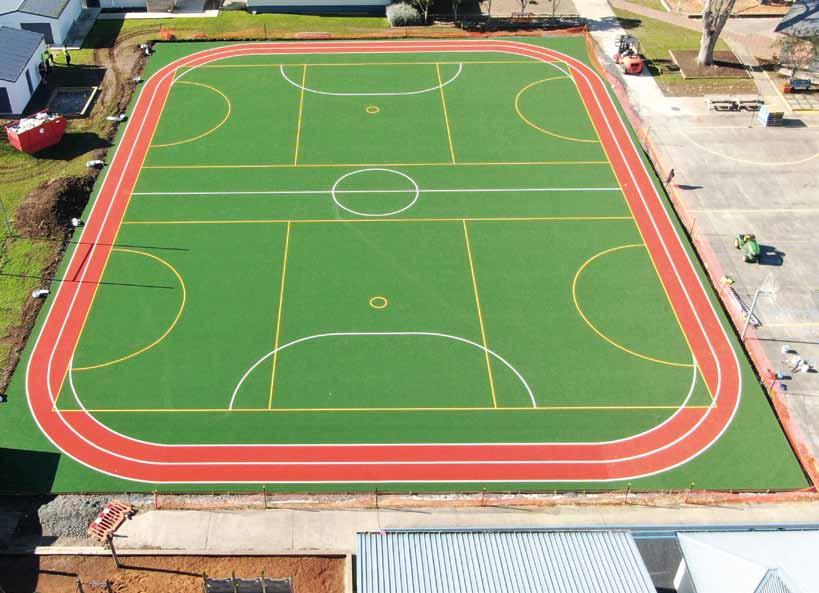
P. 0508 836 647 E. info@teamturf.co.nz www.teamturf.co.nz

Manaakitanga – Whanaungatanga – Kotahitanga A whole school approach to build hauora/resilience in the aftermath of COVID-19. Equip our Ākonga/learners to co-create an inclusive respectful, safe school climate with minimal teacher invention. Students learn to authentically enact a tuakana-teina philosophy.
Ākonga develop skills to solve interpersonal issues/confl icts. This supports a growth in positive mental health and wellbeing of kaiako/teachers, ākonga/learners and whānau/families in the school community. Students with skills in this area can also be recognised and contribute as leaders to their school community. These are evidence based programmes. Research has demonstrated positive results for students and teachers in schools nationwide.
Leadership through Peer Mediation (LtPM)
for Secondary Schools (Years 11 – 13)
Cool Schools Peer Mediation Programme
for Primary Schools (Years 1 – 8)

These programmes are available FREE to schools. Funding provides training & resources, including revisits.
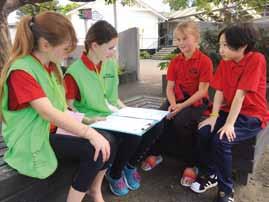
For more information:
The Peace Foundation www.peacefoundation.org.nz christina@peacefoundation.org.nz Ph (09) 373 2379 ThePeaceFoundationNZ
ThePeaceFoundationNZ

THE COMPLETE SPORTS PACKAGE

Services we offer
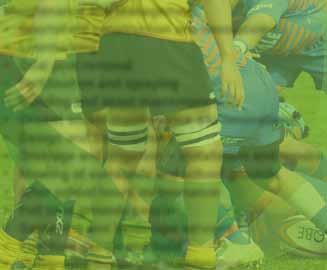
Maintenance and Management • Sportsfi eld construction and renovation • Linemarking • Goal post removal • Fertilisation and spraying • Building and asset maintenance • Cricket wicket maintenance and renovations • Design and development • Drainage and irrigation – installation and repairs • Mowing of surrounds and school grounds • After school hours maintenance • Full time grounds people • Gardening and landscape services • Furniture design and build • Playground builds and maintenance

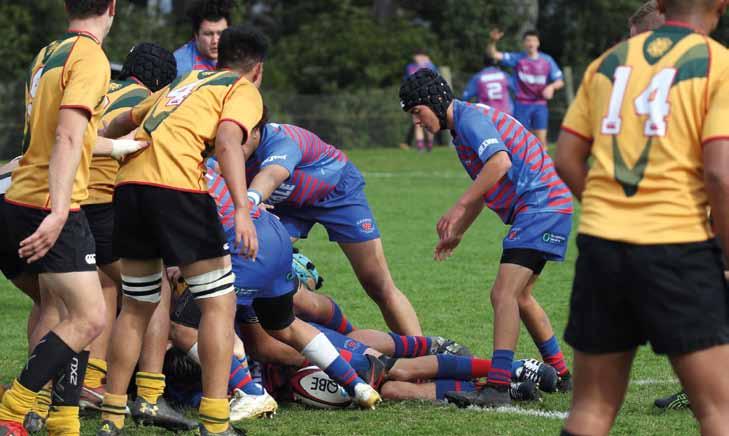
visit us at: www.rs.kiwi.nz
0800 265 000 info@rs.kiwi.nz

TOP OF THE CLASS in school maintenance & management
NZPF MaKes historY
Liz Hawes
editor
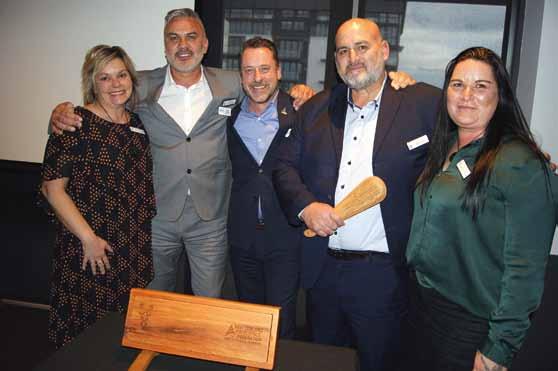
covID-19 coroNAvIruS HAS a long reach. This year, NZPF’s Trans-Tasman conference was scheduled to open in September – in Melbourne. Coronavirus sent those plans packing and for the first time in NZPF history, there is no annual conference this year.
The postponement of conference meant the AGM lost its venue. Traditionally held during the conference to maximize attendance, the AGM would now be held separately. Already, the NZPF National Secretary had received a motion to give effect to an historical constitutional change. The change, if agreed, would alter the membership of the national executive from 12 elected The taonga presented to NZPF by Te Akatea in recognition of their partnership members to 11, plus one dedicated Māori seat, endorsed by Te Akatea Māori Principals’ Association. Federation. This was very emotional for me, to receive such
The vote was much too important to leave to chance, so an an acknowledgement. At the same time, it reinforced the alternative voting mechanism was sought. Fortunately, the expectations placed upon me by my own people,’ he said. NZPF constitution already provided for voting on constitutional changes by electronic ballot, and the results of the ballot are binding. It is not a voting option usually employed for constitutional changes, but in these times of COVID, atypical has become the new norm. Besides, it allowed all financial members to vote, which is not a bad thing given the gravity of the issue. Over nine hundred members cast their vote and the motion was supported by an overwhelming majority of 860, far more than the two-thirds majority required to make the change. The AGM was held as a separate event in Christchurch and attracted a healthy quorum of around 50 principals, including the ‘These expectations were further amplified when I was inaugurated as President at my first Executive Meeting. It was a lovely setting at a Retreat House in Long Bay, Auckland. Another old friend, and ex National President of Te Akatea, Debi Marshall-Lobb, presented me with a Ngai Tahu Cloak of bright blue Pukeko feathers and placed a Taonga around my neck in front of all my whānau, including my elderly mother, and the National Executive. I had to return the cloak as Debi’s mother had borrowed it for the occasion. I must say though, I felt the weight of responsibility on my shoulders.’ NZPF and Te Akatea’s entire executive groups.
The NZPF journey to give real effect to Te Tiriti o Waitangi, is a long one, with some notable milestones. The first of these was the election of Pat Newman, principal of Hora Hora School, Whangarei, as the first Māori NZPF president. Pat remembers it well. It was announced at the NZPF 2005 Christchurch conference and was immediately followed by a rousing haka which rang out from the heights of the Town Hall.
‘All of the Māori principals had gathered up there and were honouring me as the first Māori President of the New Zealand Principals’ Perry rush (middle) with Te Akatea executive members in celebration

Pat has continued to feel that responsibility for his people a weekend immersed in the Tikanga of Te Tii Marae, Waitangi. throughout his principalship. He is a living example of ethical The experience was transformational for the national executive leadership in action and is unafraid to be outspoken and who were growing in their understanding of a Māori world view. passionate in defence of what is right for the tamariki of Aotearoa At the same time, the education lens was firmly fixed on finding New Zealand. Whether that meant turning his back on the solutions for Māori underachievement in school. Discussions, damaging, although mandated, led by Peter, Keri and now national standards, or Whetu, shifted to questions relentlessly calling out the like how schools might better Government for ignoring incorporate a Māori world the escalation of and lack of view in their practices. How support for traumatised kids in could principals make their schools, Pat Newman is never schools more welcoming of complacent. He is committed tamariki and their whānau? to Kaupapa Māori and has been How could they incorporate a member of Te Akatea Māori Tikanga Māori into the fabric Principals’ Association since of their school culture so that 1996. As NZPF President, Pat’s tamariki and whānau felt their intention was always to bring culture was valued, respected NZPF and Te Akatea closer and and treasured and school was he certainly sowed the seeds for a place where they belonged that to happen. The executive members from both Te Akatea and NZPF join and felt safe?
By 2010, NZPF had two Kaumatua Haterei Temo (middle back row) in celebration Out of these discussions Māori executive members, emerged a bespoke form of Peter Witana, principal of KawaKawa School and Keri Milne PLD. Targeting principals, as leaders of learning in their schools, Ihimaera, principal of Moerewa School both based in Northland. the PLD would take willing principals on a journey of cultural They were soon after joined by Whetu Cormick of Bathgate discovery. Working in clusters with a trained facilitator, each Park School, Dunedin. Whilst Keri introduced waiata to the principal would seek out their own cultural knowledge, values executive, which members responded too effusively, Peter and practices and having reached a point of understanding the worked on meeting protocols and values based in Tikanga Māori. sources and nature of their own cultural identity would then, as Before long NZPF had its own Kawa and, as a group, had spent a group, explore a Māori cultural world view. It was a process
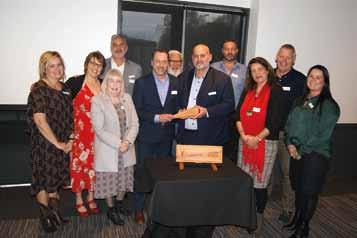

grip!Get a

Your management, teachers and students are your last line of defence against cyber security breaches.
Securing your IT networks and devices is no longer sufficient to protect your Institution from Cyber-attacks. Get fully managed cyber security awareness training so everyone is equipped with the knowledge to identify, report, and protect your Institution from Cyber-attacks!
Contact Eric Barrett for a FREE demo
Top NZ Education Technologies & Consulting Limited 027 579 1514 support@topnzetc.com topnzetc.com
Avoid slips on paths and decks with Resene Non-Skid Deck & Path. Available in range of colours perfect for high foot traffic areas.
Bring out the best in your school with Resene School Services!
For more information visit: resene.co.nz/schoolservices
of changing hearts and minds. And so, the Māori Achievement first NZPF Māori president, had also made the journey from Collaborations (MACs) were formed. Whangarei, to mark the occasion.
NZPF launched the MACs in 2014 in partnership with Te The Te Akatea president, Myles Ferris was invited to speak, Akatea and the Ministry. Hoana Pearson, formerly principal at the conclusion of which, he presented NZPF president Perry of Newton School, Auckland, was appointed coordinator Rush with a taonga in recognition of the constitutional change. and has grown the MACs to The moment was accompanied be one of the most influential by a stirring haka by the Te PLD programmes in changing Akatea members, followed by the culture of schools across a fulsome waiata. The strength Aotearoa. After two years, of emotional passion in the independent evaluation studies room was palpable. Another of tamariki from MAC schools step had been taken. Another showed marked improvement step towards biculturalism. in the children’s success rates Another step towards in core subject areas. The MACs strengthening the partnership continue to expand with more between Te Akatea and NZPF, collaborations forming every another step towards giving year. effect to Te Tiriti o Waitangi.
NZPF rightly feels great pride Work will continue. Beyond in these achievements and the principal organisations, recognises there is more work Te Akatea executive members perform a rousing Haka survey results continue to to do to fulfil our obligations emerge reporting unacceptable under Te Tiriti o Waitangi. Strengthening our partnership with rates of racism against our Māori teachers, principals and Te Akatea is an important step in this journey. tamariki. Few workplaces can claim to be racism-free. We
With the change in constitution to include a permanent seat for recognise that wider change must begin with leadership and Māori on the national executive, we move one step closer. Both that including a dedicated Māori seat on our national executive Te Akatea and NZPF executives appreciate the significance of is one more step along the journey. this outcome and at the AGM, celebrated the moment alongside Canterbury colleagues, including three former NZPF presidents, Peter Simpson, Phil Harding and Denise Torrey. Pat Newman,
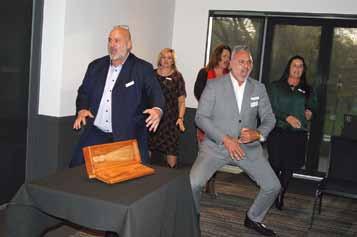
CREATING INNOVATIVE OUTDOOR LEARNING
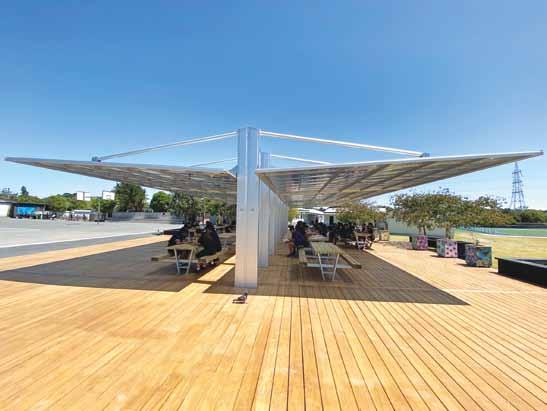
Blockhouse Bay Intermediate School
UNIQUE | AFFORDABLE | SAFE SOLUTIONS
“Uniport have delivered an exceptional outcome, on time, at cost and with no disruption to the school. Mark and his team worked hard to understand our school needs.” Michael Malins, Principal Blockhouse Bay Intermediate • Protect Students / Staff all year round • Extend your usable classroom space • School shelters, classroom verandahs & more • NZ Engineered robust & strong • Nationwide Installation
EMAIL TODAY
STAKKI The chair for a new age
DESIGNED BY MARTIN BALLENDAT
Cobalt Traffic Red Midnight Lime

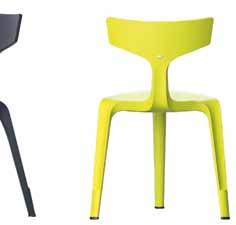
A minimal three-legged design, with a basic triangular shape manufactured from extremely durable glass-fiber reinforced polypropylene. Designer Martin Ballendat has created an iconic chair which is both visually and functionally unique, individual and absolutely unmistakable.

Stakki is extremely lightweight and easy to handle. It is an ideal chair for creative and flexible spaces, libraries and resource centres as well as school outdoor areas.
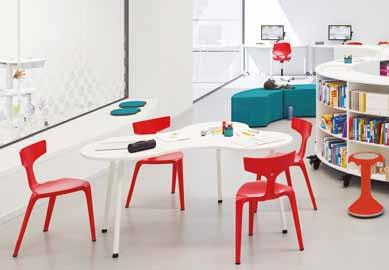
Stakki has been comprehensively tested and carries the GS “tested safety” label. It has been certified for indoor and outdoor use, and has scored top marks on the lightfastness test, which evaluates the color-fastness of a material against the influence of light.
Maximum stacking quantity: 10 chairs.
The Stakki stands firmly on its own three feet. Despite weighing only four kilograms, the design offers a very high level of stability. Its basic triangular form permits spacesaving arrangements that leave the greatest possible freedom of movement for the legs. What is the right way to sit on a chair with a triangular seat surface? Whatever way you like! You can sit down on Stakki from all sides in equal comfort and ergonomics. The chair seat has a small surface, but it is exactly the right amount to ensure all-round sitting comfort. When seen from above, the Stakki chair looks like a graphically reduced symbol.
Takes up little space and can be easily pushed together like the slices of a cake.
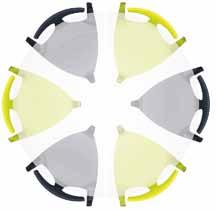
Step-shaped glide elements act as spacers and provide protection for the seat surfaces when the chairs are stacked. This is ensured by anti-slip, floor-protecting 2-component universal glides, suitable for all common floor coverings. Seat dimensions w·h·d: 437·460·378 Overall dimensions w·h·d: 537·776·553 Weight 4kg


